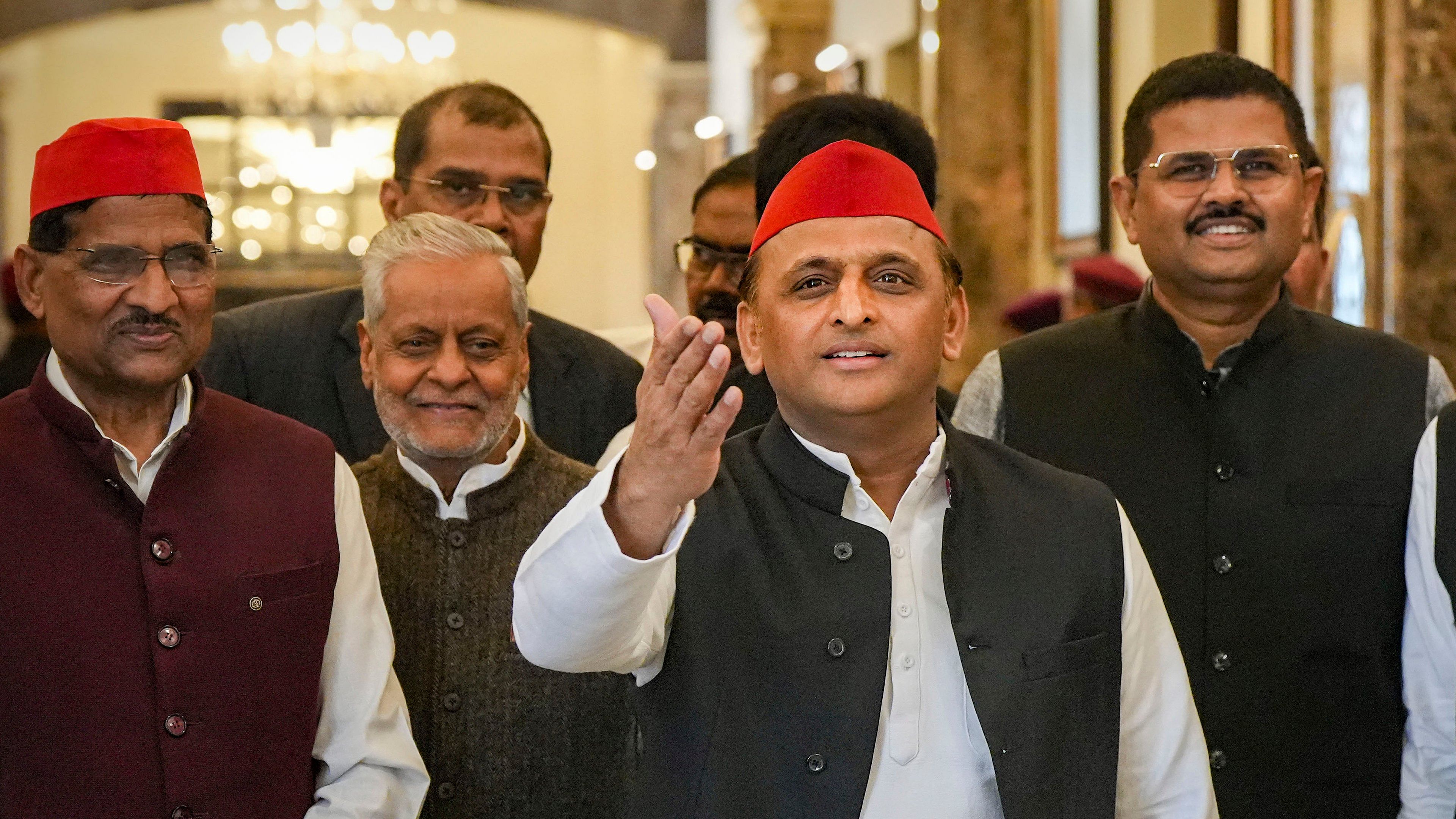
With the Samajwadi Party (SP) raising the pitch on its demand for a caste census, it is becoming increasingly evident that the general elections in 2024 could be fought largely on the lines of what was once commonly referred to as ‘Mandal vs Kamandal’.
SP chief Akhilesh Yadav’s strategy to whip up the caste discrimination fervour is reminiscent of what his father and SP founder Mulayam Singh Yadav had undertaken in Uttar Pradesh after implementation of the Mandal Commission’s recommendations in the late eighties.
It was this campaign that manifested in the convergence of various backward castes — perceived as the forces of Mandal — that threw a challenge before the rise of Hindutva through a high-pitch Ayodhya temple movement, which earned the sobriquet ‘Kamandal’.
What then began as the Ayodhya movement was now a well-oiled, widely-spread, and full-throated Hindutva tirade, intended to polarise the majority Hindus, even at the cost of spreading communal venom and hatred. A systematically created false impression about ‘khatre mein Hindu’ (Hindus are danger) helped the extreme Right-wingers to succeed in capturing a large chunk of the Hindu minds.
Visibly, the only way to counter this could be by reminding the backward and downtrodden castes how they were being systematically discriminated against by the dominant upper castes, who invariably held on to the portals of power. What could amplify this better than the demand for a caste census!
Taking a leaf out of socialist ideologue Ram Manohar Lohia’s much-echoed campaign about discrimination with the backward castes, Akhilesh Yadav took up the issue in a big way during the at the on-going budget session of the UP assembly. Evidently, the ruling dispensation looked flummoxed once SP legislators took off by staging a dharna in pursuance of the demand for a caste-based census. Finding itself cornered, the Bharatiya Janata Party (BJP) leadership found a convenient way out by pleading that the issue was beyond the state’s purview and could be dealt with only by the Centre.
A strong and vocal advocate of caste census, Lohia had felt that the backwards could seek their share more vociferously once their numerical strength was established, and the only sound way to reach there could be through a caste-based census. It was he who coined the famous slogan, ‘jisni jiski sankhya bhari; utni uski bhagedaari’ (the numerical strength of a caste combine could determine its share in governance), which was also echoed aggressively by Bahujan Samaj Party (BSP) founder Kanshi Ram, while he sought to mobilise Dalits and the extremely-deprived backward castes under his banner.
A virtual revival of the same type of movement in the name of caste census seemed to put the Yogi Adityanath government on the backfoot. Its frustration was writ large in the acrimony from the treasury benches during the assembly session.
What seemed to irk the government most was the SP’s resolve to launch a state-wide campaign to press its demand with Prime Minister Narendra Modi’s parliamentary constituency Varanasi being the launch pad.
Akhilesh Yadav’s plan is to organise meetings in each of Uttar Pradesh’s 822 development blocks. He wants to take the message down to the grassroots level that the BJP is opposed to caste census because it is against giving the OBCs their legitimate due. The SPs aim is to spread the word among the backward and downtrodden castes that their share is being nibbled away by the privileged upper castes.
Interestingly, the party has chosen to keep its vociferous OBC face and MLC Swamy Prasad Maurya away from the campaign, apparently because Maurya has erupted a controversy by speaking out against certain ‘chaupaees’(couplets) in the Ramcharitmanas. Instead, this task has been entrusted to OBC leader Rajpal Kashyap, who was recently appointed head of the party’s OBC cell.
Maurya will, however, address the block-level OBC meetings in different places.
Commencing from Varanasi, the first phase of the campaign covers the districts of Prayagraj (Allahabad), Mirzapur, Sonbhadra, and Bhadohi. This region has a huge OBC base, which the SP hopes to tap to discredit Modi, who had managed to make deep inroads into the OBC vote-bank by playing up his own OBC lineage.
The fading away of the BSP prompted large sections of the backward communities to switch loyalties to Modi’s BJP. Akhilesh Yadav’s alleged disproportionate bias for Yadavs was also responsible for a drift of many OBCs towards the BJP, particularly since the Congress has been almost defunct in this state for three decades.
Realising that the only possible way to take on the Modi juggernaut in a politically all-important Uttar Pradesh in 2024 could be by raking up the caste angle, the SP hopes to revive the old fight between ‘Mandal’ and ‘Kamandal’.
In a Hindutva-charged environment, the SP will have to convincingly convey to the OBC communities that the BJP — with its traditional upper-caste mindset — is using the OBCs just for their political gain without giving them what was rightfully theirs. We will have to wait and see whether Akhilesh Yadav succeeds in this endeavour.
(Sharat Pradhan is a Lucknow-based journalist and author.)
Disclaimer: The views expressed above are the author's own. They do not necessarily reflect the views of DH.